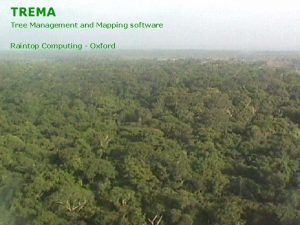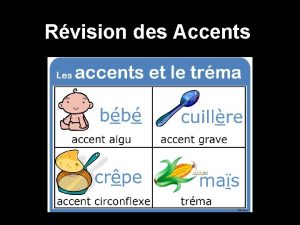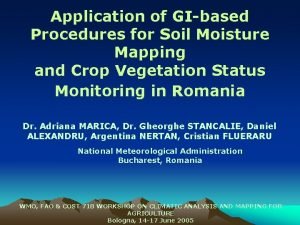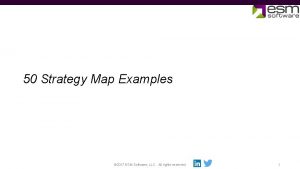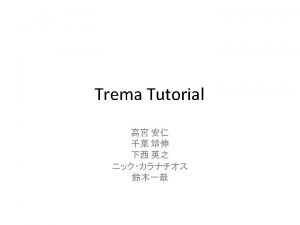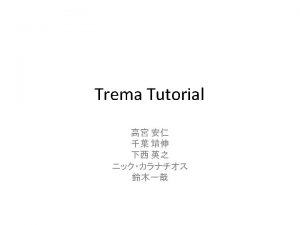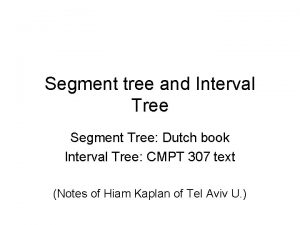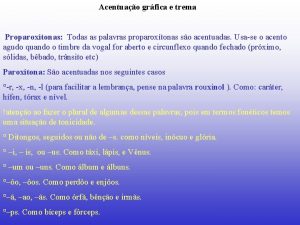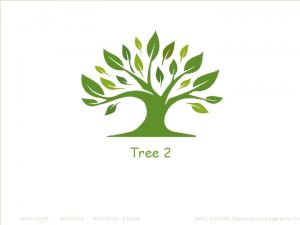TREMA Tree Management and Mapping software Raintop Computing














- Slides: 14

TREMA Tree Management and Mapping software Raintop Computing - Oxford

What is TREMA? TREMA is database and analysis software that helps forest managers and researchers organise, analyse and publish their data efficiently and flexibly. TREMA is the tool for ü ü ü Forestry Botany Ecology Biodiversity assessment Conservation Environmental Impact assessment

Data you can store in TREMA Species, Common name, Family, Genus, subspecies, Volume equation, Species group, Minimum legal diameter, Habit, Latex colour, Buttresses, Crown width equation, Leaf shape, Conservation value, Timber value, Protection status, Commercial status, uses, and more … TREMA has a core of standard fields. Users can add their own fields without restriction. The key ingredients of all TREMA databases are: Habitat type Forest reserve forest type, plot map reference, plot manager/owner, soil type, climate zone, Ordination score, and more. . Plot number, Plot type, DBH, Girth, Plot area, Height, Stem form, Canopy score, Seed tree density, local rarity, Year last logged, annual increment, recruitment and mortality, barcode, Year last logged, Selection status, Log number, and more … üSpecies information üPlace information üPlot and other sample data

Plots and other sample types In TREMA, you can define many types of sample in a single database. Typical examples are: üForest inventory data üStock maps üPermanent sample plots üBotanical survey üBiodiversity assessment

Managing species data TREMA has many tools to help handle the complexity of species names and uses in tropical forest üMultiple local names üAuto synonym updates üSpecies linked volume equations üAdd your own species fields

A tool forest inventory TREMA can handle any size, shape or layout of plot, as well as plotless samples for rapid biodiversity surveys üOutput Volume, Basal area, stem density tables at the touch of a button üDefine your own tree volume equations or use the standard ones provided üOptional error statistics

Permanent Sample Plots TREMA’s inbuilt functions allow users to error check and analyse single and multiple PSP enumerations including increment, recruitment and mortality rates. üStore data from multiple enumerations üError-checking is facilitated by inbuilt functions üCalculate increment, mortality and other time-related statistics üPSP mapping, for example, to display areas with higher mortality üGrid / cell functions

Yield allocation The ability to plan and monitor the selection of specific trees within economically and ecologically viable limits is fundamental to sustainable selective logging activity üForest management increasingly requires timber yield to be allocated based on stock maps üTREMA handles complex rules for this process üManual yield allocation is also possible

Biodiversity assessment The management of lists of species in different places is a basic TREMA skill, but you can do much more to prioritise conservation areas or assess biodiversity impact üRank species according to your own criteria – e. g. rarity üHighlight hotspots in your area based on species scores üPerform ordinations to show forest types in your data üFacilitate objective EIAs üLink to botanical voucher data

Mapping TREMA’s mapping functions provide all the map output most users require for tree plots and distribution maps, either directly or through links to Arc. View. üTrema has an internal interactive mapper and links to Arc. View and other GIS systems üStyle-setting on forest maps can be automated, e. g. to give trees a symbol for the species, size by diameter and colour by commercial class üTree coordinates can be calculated from survey data

Stand tables can be produced individually or in automated sequences üThe basic table categories are for Stems, Volume and Basal area üSize class scheme, Volume equations, filters and Area settings can be adjusted ü Tables can also be restricted to a selected species group üResults can be printed directly or exported to Excel or Word files

Adding data is easy TREMA has rapid data entry and editing facilities with functions familiar to users of Excel and Access. But, TREMA has many advantages over standard spreadsheets and databases: üIntelligent dictionaries to speed up input of e. g. species names, volume equations, plot localities. üAwareness of data structures common to typical forest/ plant databases üSpecialized sample/plot data checking functions

Flexible reporting Users can design their own simple or complex report formats and store these in the central TREMA reports library üReports can include graphics, for example species images and maps üData can be calculated for the report (e. g. total volume) or included from a linked table (e. g. Plant Family), even if the current data-file does not include this information. üReports can be printed directly from TREMA or sent to your word processor

The benefits of TREMA • Efficient use and reuse of data • Easy archival of all your data in one database • Enter your data once for multiple outputs • Simple and complex, pre-defined and custom analyses all made easy
 Tree management software
Tree management software Accent aigu, grave, circonflexe
Accent aigu, grave, circonflexe Apostrof oefenen
Apostrof oefenen Despedida do trema
Despedida do trema Wanneer gebruik je een trema
Wanneer gebruik je een trema The associative mapping is costlier than direct mapping.
The associative mapping is costlier than direct mapping. Forward mapping vs backward mapping
Forward mapping vs backward mapping Transform mapping dan transaction mapping
Transform mapping dan transaction mapping Conventional computing and intelligent computing
Conventional computing and intelligent computing Unified management software in cloud computing
Unified management software in cloud computing Project management process group and knowledge area mapping
Project management process group and knowledge area mapping Mindmaster portable
Mindmaster portable Knowledge mapping software
Knowledge mapping software Moisture mapping software
Moisture mapping software Strategy map examples
Strategy map examples
